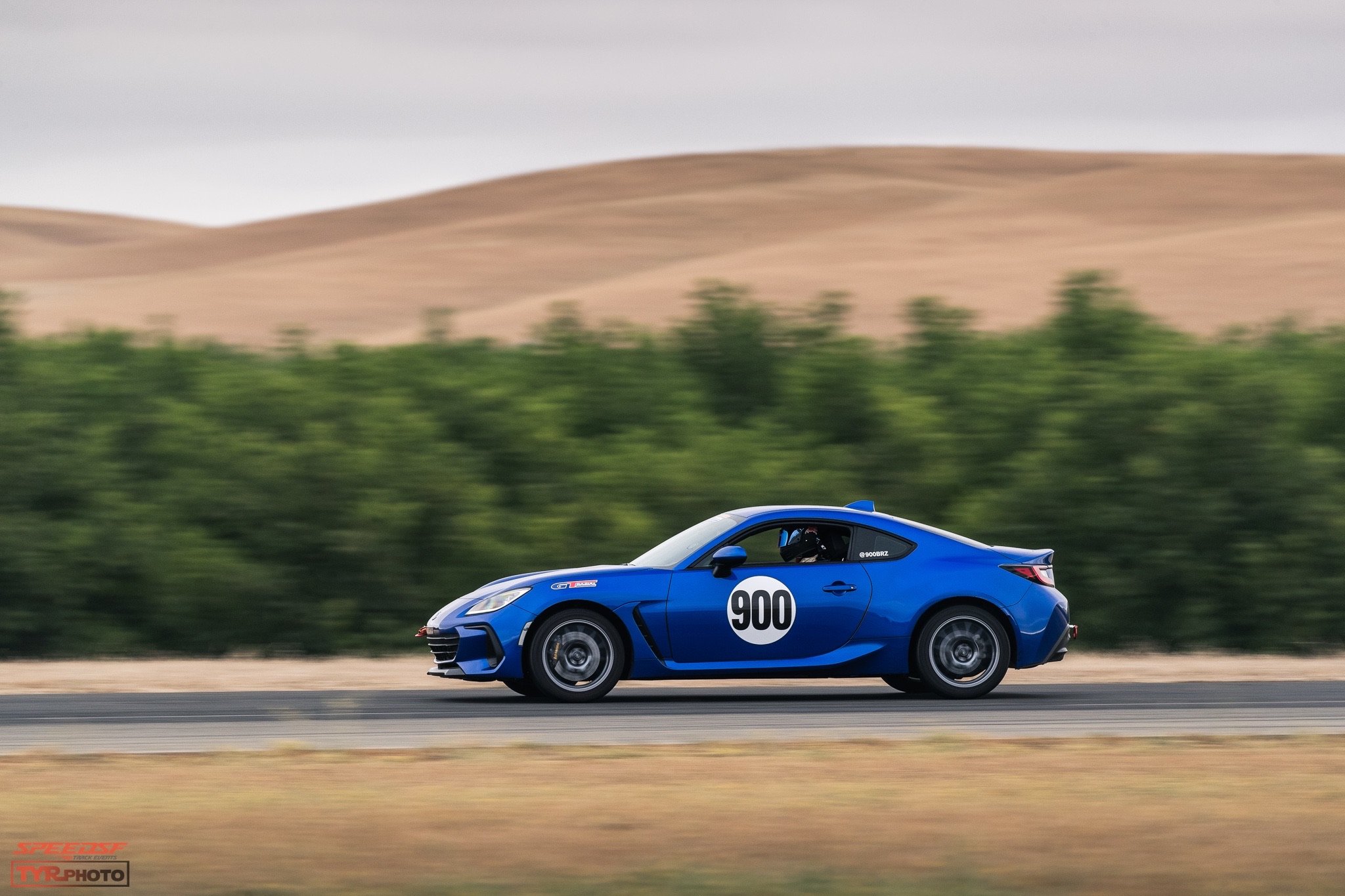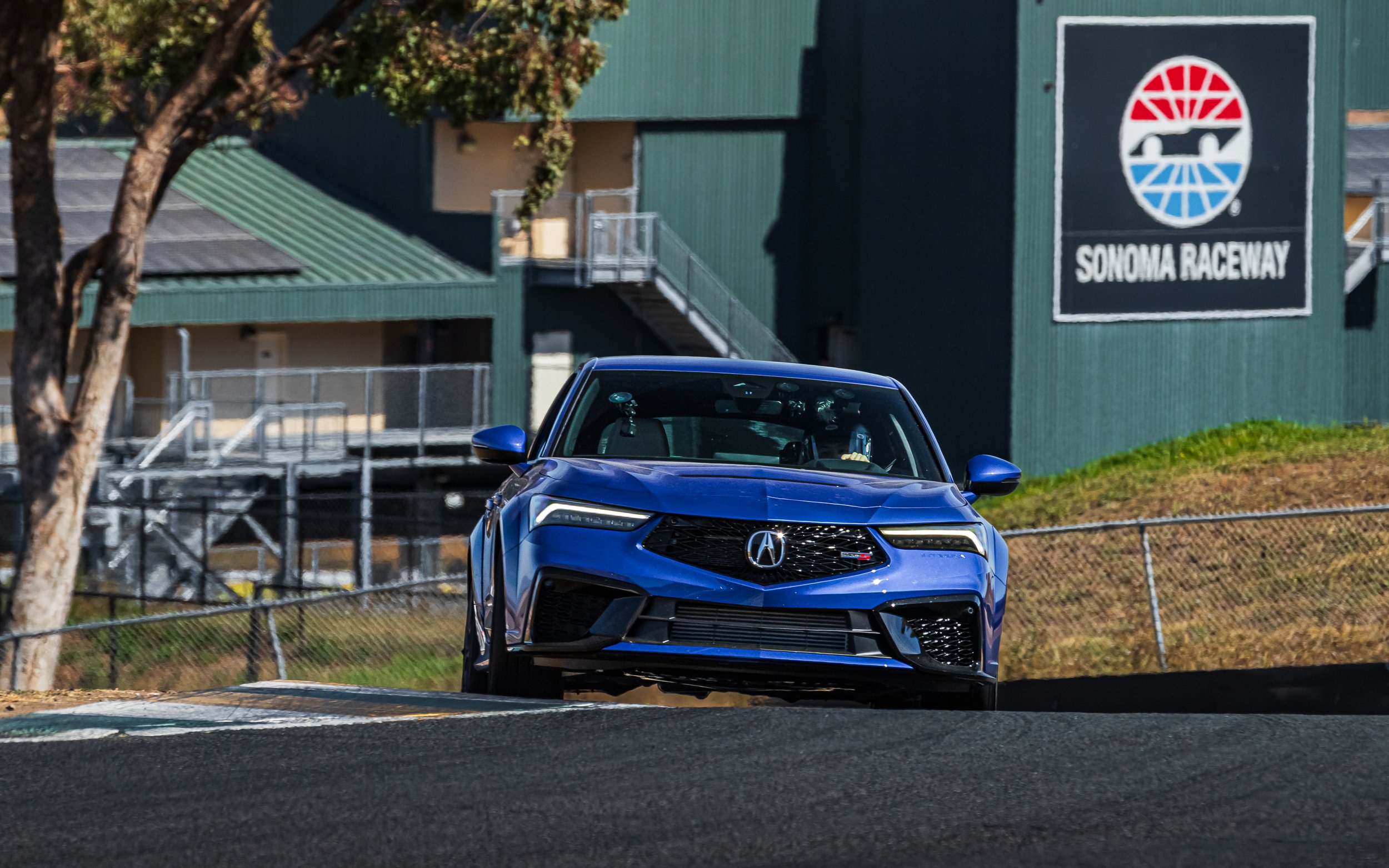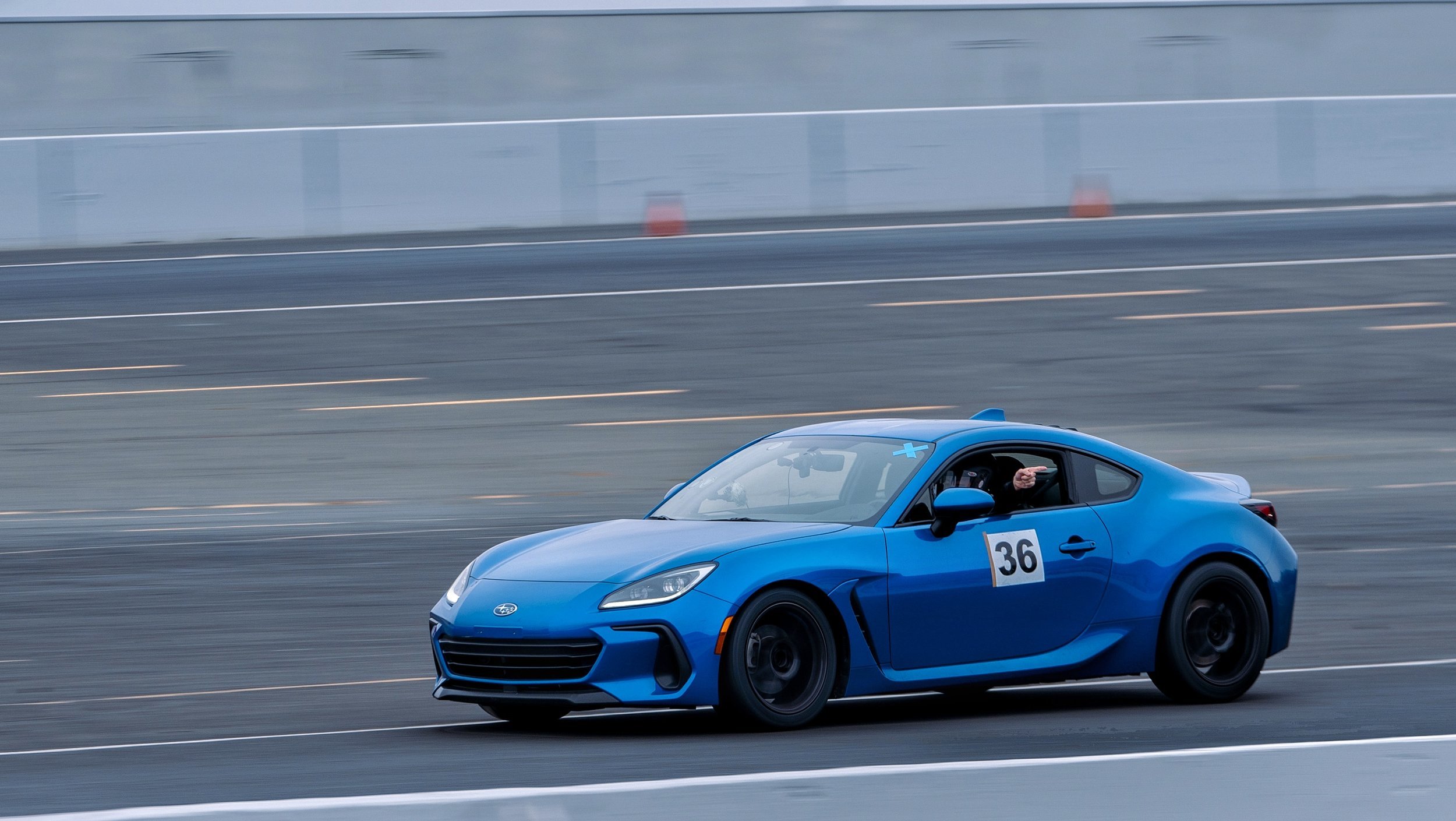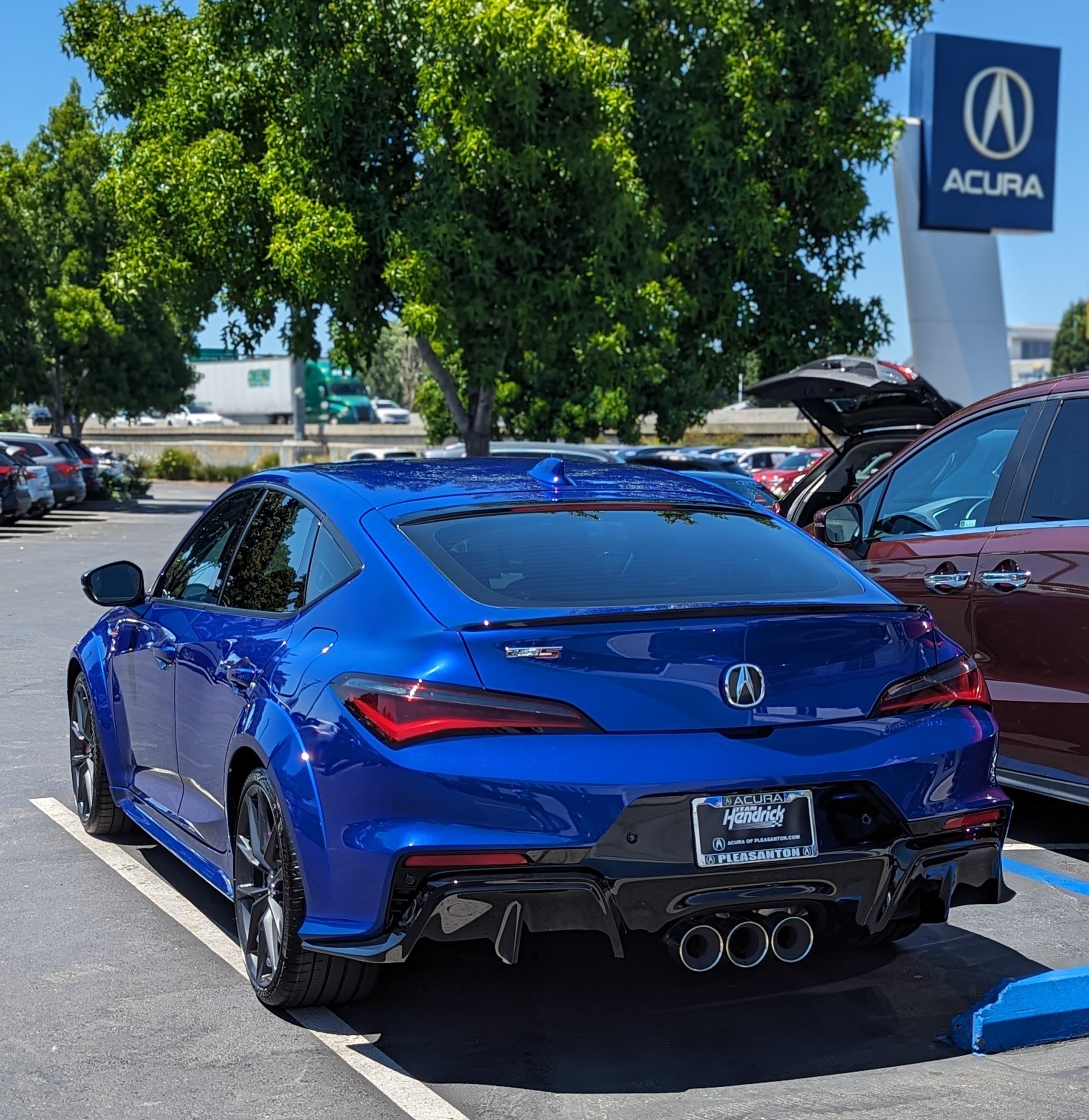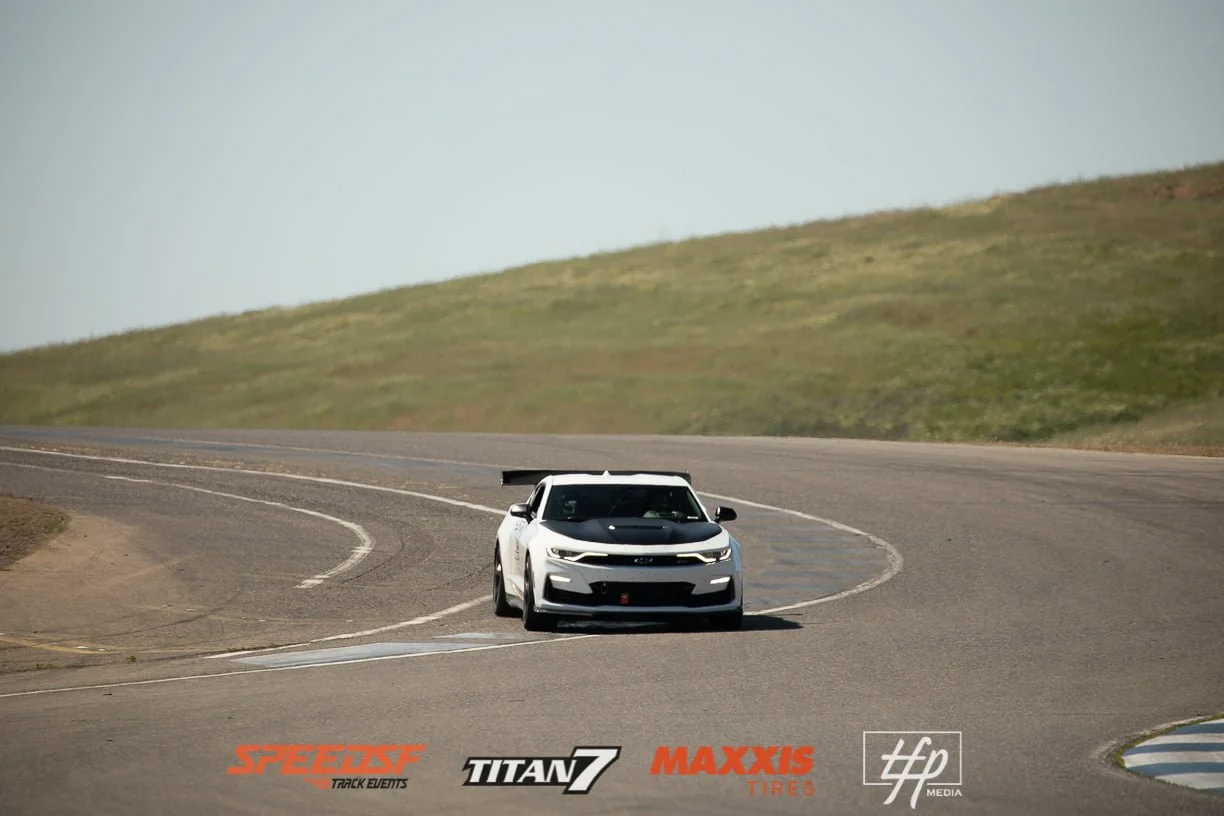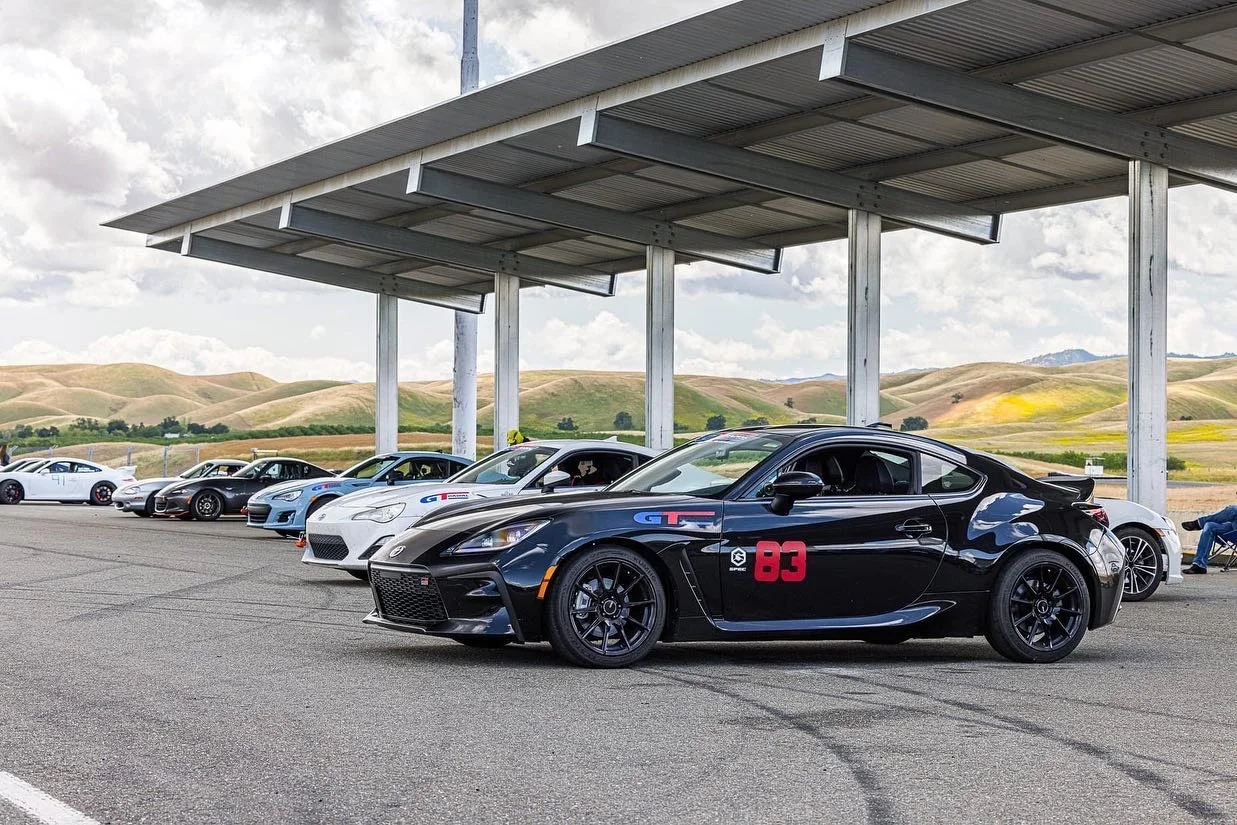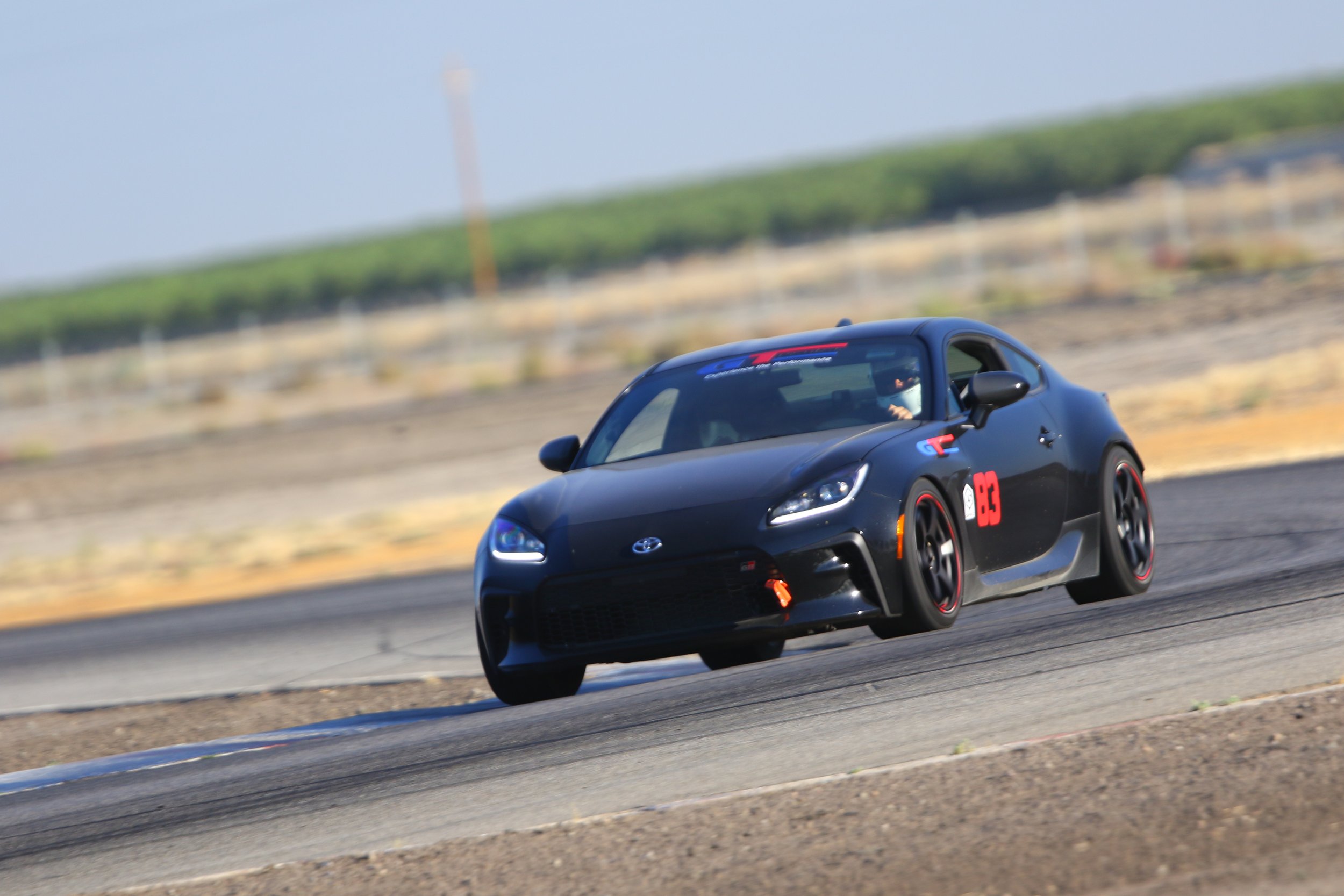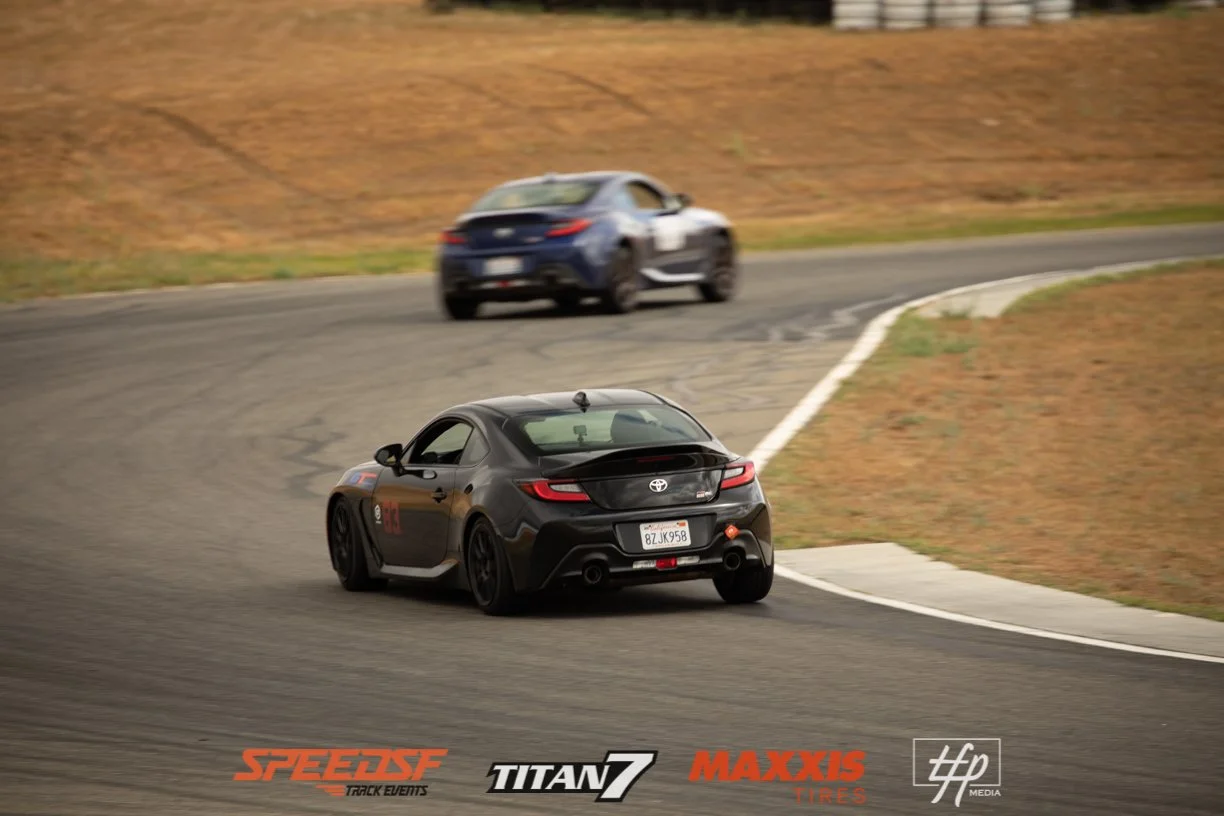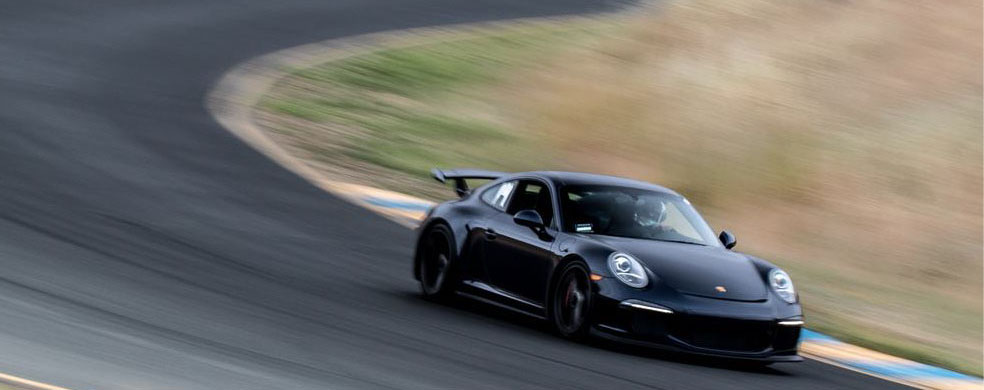
Brian's BRZ: Painful Lessons in Lubrication
Few BRZ owners have been as methodical when it comes to monitoring their engine's oil pressure as Brian Armstrong, who hopes to develop new components to make this popular new platform more dependable.
He’d spent years dreaming of driving on a track. Brian Armstrong had grown up hearing racing tales from his late uncle, a former professional stock car racer; and grandfather, a racer, mechanic, and performance engine builder. Even coming from good stock, Brian hadn’t really found a door into the world of motorsport himself. The opportunity finally arose when he relocated from New York City back to his native California in 2021.
Now in a more car-friendly environment, he decided to get a more track-oriented car and explore performance driving. It didn’t take long to choose a vehicle. He wanted a front-engine, rear wheel-drive platform and relatively low cost of operation. It was either the newly released BRZ/GR86 or the latest MX-5. The stars aligned when he found a 2022 BRZ in World Rally Blue in transit to a local dealer for MSRP. He put down a reservation site unseen and picked it up about a week later, in early December 2021.
In Good Company
He started with autocross, attending 4-5 events before graduating to track days. After a couple events, he found 86 Challenge, a local time attack series dedicated to the 86 platform and sponsored by SpeedSF and GT Radial. He started participating in the Stock Class, which allows only minimal modifications to the car, with the intention of setting a level playing field with a low cost of entry to be competitive. “The stock class appealed to me because all the cars are set up the same, more or less. That means your pace is primarily dictated by driver skill.”
The few modifications allowed in street class help showcase the BRZ’s brilliance out of the box; there are no drawbacks to having such a short list of legal upgrades. His car has the following modifications:
Pedders Offset strut mounts and top camber bolts for -2.5° of front camber
17x8” 949 Racing 6UL wheels wrapped in 225/45R17 GT Radial Champiro SX2 tires
AP Racing Endurance front BBK with Ferodo DS1.11 pads and Carbotech XP10 pads in the rear
7mm Perrin front spacers
ARP extended studs
GR Performance Exhaust
And he’s added a couple ergonomic tweaks: a shift knob from Ansix and, for a little added support, he inserted a section of half-inch yoga mat into the factory seat bolsters. It’s surprisingly effective!
In addition to competition, he also found community in 86 Challenge. Having faster drivers as benchmarks is helpful, but the participants also freely share information to help each other improve as drivers.“We record our telemetry data on AiM Solo 2 or RaceChrono data loggers, then share the data on Google Drive, so we can compare. It’s all voluntary, but we all want to help each other get faster.”
They were also interested in diagnosing some of the BRZ’s from-factory flaws. “We’ve also been collaborators in trying to understand and improve the reliability of the oiling system in the 2nd generation BRZ/GR86,” Brian continued. Two 86 Challenge participants had added oil pressure sensors to their cars and started documenting oil pressure drops on right hand corners as early as November 2022. After several drivers in the broader 86 community suffered engine failures on unmodified engines, including a couple who Brian knows personally, this became a bigger focus..
Brian’s analytical strengths helped him delve into the data and contribute to this effort. He instrumented his own car, with help from 86 Challenge drivers @nostreetracing86 and Miles Kodama, and published a video on YouTube explaining the issue with evidence from his car and two others. He also volunteered to test a prototype baffle from Killer B Motorsport and later Verus Engineering in hopes of finding a simple way to mitigate oil starvation.
Ironically, his engine blew the day one in-depth article he’d contributed to was published.
That expensive afternoon at Thunderhill East went smoothly until it didn’t. Initially, when Brian saw a pressure drop to 0 PSI, he first thought a sensor had failed. When he heard that terrible telltale shuddering sound emanating from his engine bay — the one he’d heard so many times in the big-hit failure videos on YouTube — he knew it was catastrophic.
Thankfully, fellow 86 Challenge driver Kevin Schweigert offered Brian space in his garage to suss out the cause of his FA24’s failure. With the pan on Kevin’s garage floor, Brian took a peek. It took two seconds to determine what had happened.
A small piece of metal had broken off the baffle and blocked the oil pickup. “It was a one-of-one prototype build, so these types of things can happen. Verus immediately accepted responsibility and said they would help with the rebuild.” They covered the cost of a new FA24 long block and, through generous donations from the community, Brian was able to cover the cost of labor and additional parts needed for the rebuild.
Second Stab
During this rebuild, Brian took advantage of the opportunity to make some improvements to his oiling system to try and increase durability and decrease flow restrictions, which can decrease pressure to the crankshaft.
His old oil cooler lines had been rubbing on a sheetmetal seam near the driver’s side headlight and there was insufficient protection from abrasion. It could have been a serious issue if not addressed.
Following advice from other 86 Challenge members, he decided to replace the lines with custom built Goodridge 910 AN hoses—as used in the GR86 Cup Car. These kevlar-braided lines are more abrasion resistant, but also feature a larger internal diameter, for less flow restriction. He also increased the size of the oil cooler core with the hope of reducing temps and reducing flow restriction.
His shakedown of the new engine, oil cooler, and a new generation of oil pressure instrumentation hardware at a recent SpeedSF event was auspicious. Everything worked well, Brian was at ease, so he pushed a little harder than normal set a new PB.
Brian’s committed to the cause. His continuing work with Verus aims to solve this starvation issue and the pair is planning to test a new prototype in January. They now believe the primary issue may be related to the oil returning too slowly from the heads to the oil pan, which the prototype attempts to fix.
The community support and innovation from the major aftermarket players have encouraged Brian to continue chancing his baby in an attempt to solve the problem which worries most BRZ owners. Undaunted by the big bang this year, he’s planning on returning to Stock class in the 86 Challenge in 2024. Consider it a testament to a lovely atmosphere among cooperative drivers and an exhilarating platform worth taking a few risks for.
Fenton's Integra Type S: A Change of Heart
While he was on the fence for a while with Acura’s bigger, boatier Integra, the Type S had enough of the right stuff to convince him to try this front-wheel drive super sedan.
“I used to be the biggest hater of FWDs,” he started. Despite his introduction to cars coming in the form of a Civic, he rapidly transitioned into rear-drive platforms when he took up track driving. After a pair of S2000s, he moved onto Porsche Caymans, 911s, and, most recently, a Subaru BRZ. What they all had in common was their rear-drive layout, which cemented in Fenton the belief that all other drivetrain configurations were beneath consideration.
Lately, he’s had a change of heart.
It was an unexpected decision to sell his BRZ. Oil starvation issues concerned him, but he had also owned the car for eighteen months and was starting to wonder what decent replacement was out there—something new, fun, and practical between fifty and sixty grand.
Actually, he was a little more particular than that:
1) It had to be track-capable.
2) It had to have been endorsed by Throttle House, savagegeese, or TheTopher.
3) It had to be at least as practical as the BRZ.
4) It couldn’t break the bank in the event of an incident.
Not much in that price range met his requests, but the faster Hondas, despite driving the wrong axle, were fairly close. But it was more than the drivetrain that deterred him at first.
“I remember when the base Integra was first announced, I thought Acura was disrespecting the Integra name. It looked like a boat; it had no resemblance to the DC2 or the DC5 and, I believed, was probably an overpriced Civic.”
A few months later, the Integra Type S was announced, and Fenton found himself torn. “I started to love the way it looked. Even though the general shape was the same, they tweaked the right areas to make it look like a driver’s car. This had proper flares, an aggressive rear diffuser, a vented hood, gaping intakes—it was unique and purposeful.”
“The Integra wasn’t really on my radar until, one day, I was bored at work and decided to configure a car on the Acura website. I specced out my ideal Type S, and figured I’d add my email to their list—why not?
The next day, Acura of Pleasanton, just seven miles from my house, contacted me and offered that exact car at MSRP plus $1,000 of non-negotiable dealer add-ons. One prospective buyer had backed out and my name came up on their list.”
At the time, he’d been considering the FL5 Civic Type R, though the markup was significant. Plus, the car has a number of creature comforts and tuning differences over the Civic that makes it a better daily. An Integra-specific re-tune of the K20C1 engine, shared between the two, provides much more mid-range torque. Additionally, the Integra’s electronic dampers benefit from new tuning to make it a more supple road car.
The case in favor of FWD was growing, but he still had his bias to overcome. “I used to believe that, if you cannot powerslide it out of a corner, it’s not a sports car.
However, he couldn’t find anything else under $60,000 that is spacious, has a backseat, has a manual transmission, is track-capable, and is rear-wheel drive. I realized that, in order to hit my price point, I’d have to make one or two concessions.
I figured I’d at least give the Integra a try. In person, it looked fantastic, and it felt like a $50,000 car inside. It was something I could live with on a daily basis. The shifter is nearly as good as a Honda S2000’s, the ride quality is phenomenal; with the dampers in comfort mode, it rides almost as well as a luxury car. It has minimal torque steer and phenomenal brakes. After driving it around the block, I was sold.”
He bought it that day.
Since then, he’s beaten nearly all of his previous bests. At Laguna Seca, Thunderhill East, and Thunderhill West, he’s beaten his bests in the BRZ by 2 to 3 seconds. Some of that has to be down to Integra having twice the torque, but, as Fenton’s learned, a FWD car might be easier to come to terms with.
“I can lean on the car more confidently, whereas the BRZ would break away more abruptly. I know that, on turn-in, it’s going to understeer, and while that might sound boring, it means I can get up to speed a little bit faster, especially on cold mornings.”
At Laguna Seca, he drove the tires off his car—literally. Underinflating the PS4S tires to try and keep them in their ideal range seemed sensible, but during turn-in to Turn 6, the front-right tire debeaded. “I only stopped a few feet from the wall. It taught me not to track 30-profile tires with soft sidewalls any longer.”
If there was one issue beyond that, it was the lack of support from the stock seats. “The OEM seats are inadequate for track driving; they are the same design as the base Integra with very little bolstering. The OEM FL5 seats are supportive and soft enough for daily driving and track duty. I’d happily exchange the Integra seats’ heating and electronic adjustability for the FL5’s greater versatility.”
And so he started adding the first round of modifications, beginning with a set of 18 x 9.5” + 45 Apex VS-5RS wheels wrapped in Kumho 265-35 V730s (the same as he had on his BRZ for fair comparison), as well as a set of Ohlins Road & Track coilovers.
The Road & Tracks have a reputation for being more road than track, but the Integra-spec 6kg front and 10kg rear springs are much stiffer than what’s normally offered. “The spring rates have helped a lot with tucking the nose. You can get consistent mid-corner rotation with a lift-off the throttle.”
Along with those mods, he added some Castrol SRF fluid and a set of Endless ME20 pads from RHD Japan since the yen is weak now. Their torque rating is much higher than the standard pads, which were at least resilient enough to run sessions at Laguna without fade.
With the first round of modifications in place, he took it to Thunderhill West and ran a 1:24 in his second session—some 2.5 seconds faster than he ever went in his hardcore S2000 on Federal tires. “It felt adjustable; it wasn’t a battle against understeer in every corner. You can transfer weight with the inputs and rotate the car in small, measurable increments. That’s something I find a modern GTI just won’t do.”
Most recently, Fenton ran Thunderhill East Bypass for a day that he found encouraging, if not a little frustrating. After spinning in the first session and getting the black flag, he found himself without traffic in the second session and logged a 2:01. “I believed I could find another one to two seconds in the third session, but one of the flaws of the car held me back.”
In order to completely avoid fuel starvation, the tank needs to remain above half-full. After dipping below the middle hash five minutes into his third session, he spent the remainder dealing with fuel cut. He couldn’t leave too miffed; he’d only had one real session to push the car, and with that 2:01 indicated on his Garmin, he’d already gone three seconds faster than he ever had in the BRZ.
Considering he’s only done three modifications and is already three seconds faster than the BRZ, he has no regrets. “I might not be powersliding it everywhere, but it’s taught me that there are other, subtler ways of manipulation.”
Beyond all this, I can drive to and from the track in complete comfort. With radar cruise control, lane-keep assist, blind spot monitoring, heated seats, a premium ELS sound system, and even a sunglasses holder—I’ve never been so comfortable on my way to and from the track before. Going from a partially gutted S2000, to my mostly-practical BRZ, to this, I’ve experienced three distinct improvements in comfort. Plus, I can ferry people around. There is plenty of space for four adults—roughly the interior space of an Accord from fifteen years ago.”
It’s still a little too quiet to hear with his helmet on, so he’s planning on upgrading to a modest exhaust that should make it easier to gauge where he is in the rev range, reduce backpressure, and find a little more grunt. That said, it’s not lacking in that department; it has more than enough torque to run third gear through most of Thunderhill West. Oh—it could use more front camber.
In Fenton’s eyes, it deserves to be seen as Acura’s flagship sports sedan—it’s a deserving successor to the DC2 Integra Type R. “It’s a compromised car at the end of the day, and yet they have kept all those compromises from adversely affecting driving enjoyment. To me, it’s the perfect compromise.”
Fenton's BRZ: The Dependable Workhorse
Rather than go for the all-out track car, Fenton decided a more versatile vehicle would better suit his current needs. After making only a few modifications, he’s been able to enjoy a nice balance of reliability, daily comfort, excitement, and on-track competence.
He had started his quest for the perfect street-track hybrid with high standards. The tactile response of his first S2000—yes, even with vaguer steering—had Fenton smitten with raw cars that bristled with energy and urgency. Then there were a couple Porsches—a pair that taught him about all the bliss and all the frustration that comes with owning a German sports car pushing two decades. He’d set out to try and get something supercharged with emotion, but later realized that there’s usually a high price to pay for that sort of zing.
As time went on and his priorities changed, he realized that it might make sense to try something new. He didn’t want to give up on his quest for a usable sports car, but he was willing to accept that a warranty and back seats meant just as much as speed and immersion. It could be quick and capable, and even if it didn’t have that undiluted feel that some of his older cars did, the compromise would be better for what he, a casual track day driver with a need for a practical daily, was looking for.
Versatility: A Sign of Experience
His search for a great all-rounder coincided with the release of the second-generation BRZ. It seemed like fate: more torque, more room than his S2000, and a warranty that granted him some peace of mind, it seemed to have most of what he was after. The rash of outrageous markups had him calling dealers within a thousand-mile radius to find someone who wouldn’t gouge him. A few days later, he booked a flight to Oregon and made one his own.
It looked fast in World Rally Blue, and fitted with a six-speed as well as an LSD, it had all the performance options he wanted for track duty. However, its real-world usability still had to be determined. Fortunately, he had an 800-mile trek back to the Bay Area to fully experience that side of the new BRZ.
Civilized, Capable, Comfortable
His trek along the coast only confirmed his suspicions: the BRZ was an excellent road car with the sort of manners one wants from something they’ll spend their morning commute in.
“Visibility is excellent—far better than my Porsches or an S2000 with the top up. NVH can be a bit high on freeway journeys, but that's the price you pay with a 2,800-pound car. Even so, it beats my previous cars and the older BRZ in that respect.”
Because of its good ergonomics and easy ingress/egress, it doesn’t morph into an iron maiden during long distance drives or irritating hours in traffic.
“The seat has plenty of lateral bolstering for the torso, but not quite enough to secure my thighs when driving fast. That’s not ideal for the track, but it does make the seat easier to get in and out of. For now, I don’t have any plans to get a bucket seat.”
“The steering is telescopic and height adjustable. The steering feel is not anywhere as good as my 997.1’s, but it is quite good. I’d rate it a 7/10; as far as electric racks go, it has a good amount of weight and feedback, it’s not vague around the center, and it’s fast. It only takes a tiny bit of steering input and the car darts.”
There’s also real headroom and enough space in the footwell to keep his legs from cramping. For a man of average height and build, the second-gen’s cabin is a genuinely comfortable place to sit for extended periods—even some of his taller friends agree with this.
Performance Pickup
If the new BRZ has something which helps both its real-world versatility and its on-track performance, it’s the increase in displacement over its predecessor.
“From a performance standpoint, the second-gen is better in every way than the first-gen. The torque dip is not a significant problem, it doesn’t feel underpowered.
True, it doesn’t sing at the top end like an F20/22 will, it doesn’t have the same narrow powerband. The FA24 makes good torque from 3,500 revs and just barely plateaus past 7,000 rpm. “Actually, it’s a pretty rev-happy engine. It isn’t electric at the top of the rev range, but it likes to be revved out,” he adds.
Fortunately, the BRZ’s famously wonky throttle response is less noticeable on track. At speed, it feels linear and natural.
Mostly Unmolested
While it’s fun and focused enough in stock form to provide real pleasure on the track, Fenton wouldn’t be doing his fanbase much good if he left it totally factory. However, as this car is meant to be more dependable and economical than it is fast, he’s shaped some of his tuning approach around cost savings and reliability to ensure his weekends go smoothly. No matter how quick and engaging it could be, it’s more important that it’s running on Monday morning when he needs to start his commute.
He put reliability first—just the bare minimum. To keep the car happy during a ten-lap session, he had to first address the car’s oiling issues. “An oil cooler is an absolute must—the OEM cooler is useless,” he added. It required a little custom bracketry, but his Colorfittings aftermarket cooler went in easily.
The OE oil isn’t really up to track demands and needs to be flushed—a realization he had after trying one track day with it. The factory 0W20 spilled out thick, black, and opaque. Thankfully, it’s not a picky car which only sips the finest; he skipped the primo Motul oil and settled on the more accessible Pennzoil Platinum 5W30.
However, the good stuff is circulating through much of the drivetrain. Fenton flushed the OEM diff and transmission fluids and replaced them with Motul 75W90. Better heat resistance, reduced wear and tear, and improved peace of mind.
Only Minor Modification Needed
After ditching the stock pads for a set of Raybestos ST45s, he addressed some shortcomings in the factory suspension. The most significant handling benefit as of yet comes from a little more camber. Just upper and lower bolts helped him achieve -2.6 degrees of camber and only set him back sixty bucks.
An affordable set of Enkei TS10 wheels have allowed him to bump up his tire sizes without stretching his limited budget. “I don’t care if anything happens to them—it’s nice having a disposable/expendable wheel and hop the curbs carelessly,” he adds.
Currently, he’s been tweaking a set of prototype Annex Clubspec Pro coilovers—and his car is the test mule. Most importantly, the car has to be comfortable. Both he and Annex have been searching for a spring rate that suits daily driving.
Why it Works
Despite its imperfection and its semi-compromised nature, the second-gen BRZ still delivers on the track—though Fenton has adopted a new philosophy when it comes to thrashing this car.
“I definitely get a buzz from its handling and all the options it gives me. If I want to get the car to step out mid-corner, it only takes a stab of the throttle. You can throttle steer the car in most corners with medium-grip tires,” he relays happily.
“If I get a drift just right, it pays off and I’m pleased. However, I’m never dying to wind the engine out or double-downshift to get that perfect gear change like I am with the S2000. With the BRZ, it’s only exciting at the very limit.”
“When I want an emotional drive, I take my NSX out. Even sitting in that car at a stop light evokes some feeling. The BRZ may not get my heart pumping in the same way, but it is the reliable workhorse that’s happy to be abused—or just used like a conventional commuter car.
Not having to lift the hood often compensates for any lack of excitement.
In the Under-$40,000 category, it might be the best dual-purpose car I know of—as long as you don’t need big back seats. Still, the storage space is decent. You can fit a whole set of wheels and tires in the back—that’s something I never could do with my S2000.
“For me, this car is a tool—it’s not an emotional object. As long as it helps me become a faster driver and gets me to work comfortably, then it’s served its purpose.”
Parts List
OEM Subaru crash bolts. OPC adjustable lower bolts, Annex Clubspec Pro Coils one-way adjustable 5/6K F/R
Enkei TS10 wheels 17x8” with Kumho V730 tires
Castrol SRF fluid, Raybestos ST45 front pads, Powerstop rear pads.
AWE full touring exhaust
Rich Bonem's BRZ-Camaro Dilemma: Speed Costs Money
After a challenging, fruitful foray into time trials with his BRZ, Rich started to crave a little more. He decided to buy himself a Camaro SS, and though fast and thrilling, he found it had one major flaw.
Years of construction work meant his hands weren’t what they used to be, but that only meant that Rich Bonem had to find a new outlet. That and a few objections from his loved ones was why he switched from lapping crotch rockets to time trials in Subaru BRZ which, even in stock trim, was already a fantastic driver’s car. Light, agile, and encouraging, his 2017 BRZ Performance Pack served him well that first year, during which he squeezed in twenty track days—and all he did to ensure the car ran well was add a Mishimoto oil cooler.
The modifications came the following year. With a set of Enkei RPF1s wrapped in 255-section Bridgestone RE-71s, the BRZ was surprisingly capable of near-factory footwork. To make the most of that improved stance, he used SPC’s rear control arms and their toe arms to dial in a track-specific alignment. With 3 and 2.5 degrees of negative camber front and rear, respectively, the car could be leaned comfortably, generate the needed mid-corner stick, and oversteer predictably—just what the underpowered BRZ needs for fast times.
Although power wasn’t its forte, the BRZ was able to be livened up some. Rich tried what he could to squeeze a little more from the FA20 with UEL headers, a JDL high-flow cat, an Invidia N2 exhaust, as well as an OpenFlash Tune. It wasn’t groundbreaking horsepower, but 180 horsepower at the wheels in a 2,700-pound car qualifies it as quick.
With a set of Verus brake ducts topping off the short list of mods, Rich had himself a competitive car he could take to 86 Challenge. “What’s really cool about the 86 Challenge is the fact you can take a completely stock car and compete. Every event has had a great turn out, and when you’re ready to add some more upgrades, there’s a group for you, no matter how modifed your car is,” Rich says.
This car and this competition provided Rich with the realization it sometimes takes eager track rats years to learn. “When you’re competitive in motorsports, seat time is the best upgrade. In just one year, I went from being a complete noob to being one of the fastest guys at the track, and this was due to regular lapping days and the way I gained confidence so quickly. Every lap you push a little harder, brake a little deeper, focus on more advanced techniques, and study the features on the track that are so hard to notice when you’re new and uncomfortable.”
Still, that challenge could only last so long. Eventually, he felt like he hit a wall. No matter what he tried, he couldn’t improve upon his personal bests.
Looking into the cost of getting more power from the temperamental FA20 seemed silly; a little research into Kevin Schweigert’s experience with his supercharged BRZ wasn’t encouraging; things started to break things once past the 350 horsepower-mark. For that reason, Rich decided to leave the underpowered lightweight behind and move onto a new platform.
In addition to brakes the size of medium pizzas and a motor over three times the size of the Subaru’s, the Camaro SS 1LE represented a new challenge to Rich. It was bigger and harder on consumables, but unlike the Subaru, it had a robustness and, crucially, a warranty which made tracking it relatively easy on his conscience.
Not surprisingly, Rich was staggered with the car. The braking performance was stunning—seeing a measured 1.3 G in the heavier braking zones was a big surprise considering the additional half-ton of weight. “I felt my soul leaving my body,” he reflected.
The interior offered plenty of space, the gearbox was sweet, and the general reliability was impressive, too. Therefore, the ease of transition was more than just calming—it was inspiring. “The Camaro really made me feel like a superhero,” he added.
True, some things needed improvement—he added an APR GT300 rear wing and some adjustable rear toe links, then dialed in a little more camber all around. Other than that, it was left stock, because it was more than he could fully exploit at the time of purchase.
If it had any flaws in its driving dynamics, it’s that it wasn’t’ not the chuckable thing that the BRZ was. Still, it compensated for the added size with real stability and, obviously, a lot more motor. He increased the front tire width to match the rear 305s, but in its current configuration, the 3,800-pound bruiser still lacks that urgency that he loved so much in his old car.
For Rich, the dependable, reassuring balance, great high-speed manners, and stress-free lapping were the outstanding traits—outstanding enough to forget about its few flaws.
Good manners and an extremely stable platform gave Rich the encouragement needed to push his expensive track toy.
Except one. That ease of tracking and the obvious challenge kept him from ever feeling stagnant or frustrated, but he couldn’t help noticing the damage done to his bank account. Between track day insurance, gas, tires, and brakes, Rich found he was spending nearly twice as much every weekend than he had with the Subaru. Speed and power were fun, but like Kevin Schweigert realized, they’re not everything.
Brake pads lasted only four lapping days, and the tires two—the massive weight wearing out the shoulders extremely quickly. Not surprisingly, he’d only managed half the number of track days in the Camaro over eighteen months than he had with the Subaru in one year.
For Rich, the Camaro is the simple solution that so many track guys are looking for. “It’s a tried-and-true platform that will work, but I find myself already feeling like I want more. I can make it faster, but to upgrade an already expensive car is just crazy. Now, I believe I’d rather start over with a stock BRZ and upgrade slowly to appreciate the differences each upgrade makes. Maybe a K24 engine swap in the future?”
This journey has taught him of all that which is really important in a track car, as well as the cost restrictions and practical limitations that the starry-eyed builder never really understands until they’ve sunk half their savings into a creation. To win requires practice, and to have fun requires a constant challenge and regular advancement towards that goal on the horizon. How does one balance that? That’s up to the driver and their tastes, finances, and abilities.
Kevin Schweigert's GR86: Back to Basics
After several unfulfilling years spent chasing big power, Kevin’s realized that the quality he most appreciates in a sports car is its incisiveness and communication. After a return to a simple, agile GR86, he found that thrill that got him obsessed with trackday driving in the first place.
Kevin Schweigert’s fondness for the little Toyobaru products has waxed and waned over the last decade. His first, a first-generation BRZ, gave him that feeling of involvement that had him hooked. The lack of power led him to supercharging its engine and pushing power near the 400-mark, which proved to be a backloaded decision; axles and gearboxes needed replacing soon afterwards.
Tired of dealing with the temperamental blown BRZ, he traded it for a stouter A90 Supra that could happily handle 500 pound-feet. However, the Supra’s heft, increased running costs, and softer edges didn’t excite him quite like the little BRZ once did. In fact, he even considered hanging up his helmet.
Despite big power and impressive lap times, the softer Supra didn’t excite him like his BRZ did.
Thankfully, he didn’t have to do that. After getting a shot at testing his friend’s GR86 last winter, he sold his Supra and sprung for another normally-aspirated, lightweight, visceral, and raw machine. This time, another .4 liters will have to do; Kevin’s done with boosting an FA motor.
Without the former cars’ power, the new GR cannot hope to compete on longer tracks, but its combination of a larger motor and low weight is keeping Kevin quite busy. Significant torque increases and similar gains at the top end mean it’s happy to dance around in third gear in a way that the previous BRZ pre-blower never could.
Though power adders aren’t a priority right now, he’s planned out a few bolt-ons to get the FA24 making something closer to 250 horsepower at the rear wheels. A few duels with a lightly tuned AP2 S2000 has proven that it’s not lacking any straightline speed—and that’s with just a Counterspace Garage Spec Touring exhaust bolted on. This was done mainly for the fact that he couldn’t live with the digitized noise piped into the cabin. “It just wasn’t right,” he said.
He’s made good use of his connections at Counterspace Garage to get his latest acquisition into fighting shape—not that it needed much help. His list of modifications is fairly short, but the effect is obvious. “I wanted more stability and sharpness via the coilovers,” he stated. Thankfully, the ones used didn’t cost him much—they were once the coilovers he ran on his GR. “I had them revalved for 2kg less spring rate since this car is driven to the track,” he added. These CSG Spec Tein SRC V3 (7kg F 8kg R) aren’t the only hand-me-downs—he’s also got an OEM 2013 rear sway bar. Two hand-me-downs and he had all the pointiness he was after.
Stopping also needed some work. For Kevin, the CSG Spec C1/C11 pads don’t fade, last forever, and offer great modulation. Of course, a wider set of shoes helps there, too. His car wears a set of tasteful 17x9.5” Volk TE37 TA +44, including a 10mm front spacer, shod in 255/40/17 Maxxis RC-1 R2.
At this early stage in its development, he’s been able to go sub-two at Buttonwillow CW13 without wings or slicks, and from the onboard footage, it’s not hard to see why. Assuming the angles are kept reasonably shallow, the car can be shimmied in on the brakes and wiggled through the middle of the corner—several times if necessary—to get through the corner quickly and stylishly. The straightline speed isn’t anywhere near as great as his Supra’s, which also likes to dance around in this fashion, but the GR’s low weight, moderate power, and greater communication makes it a more involving drive.
“It’s pretty much telepathic,” Kevin adds.
It’s got the right sort of rack as well as all the sensory inputs needed to keep an aggressive driver completely engaged and satisfied—straightline speeds be damned. An audible beep every time he nears redline, plus a rife bolt-like throw of the gear lever help the 2.4-liter motor stay in its ideal range. Again, this engine’s not a top-end screamer, but the added displacement means the ratios don’t need to be shuffled through so frequently, and that rear end will move around just a little more with some third-gear stabs of the throttle.
That willingness to rotate, plus some mild engine tuning and a few aerodynamic additions might make this GR a contender for the S4 title. Will Kevin take the crown? It’s hard to say, but it’s definitely in the realm of possibility. What’s certain is that he’s rediscovered his love for tracking—and that’s what matters.

